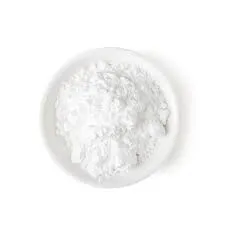Acrylamide Polymerization Reaction An Overview
Acrylamide is a chemical compound that has gained considerable attention in both industrial applications and scientific research due to its role as a monomer in polymerization reactions. This colorless, crystalline solid is soluble in water, making it an ideal precursor for producing a variety of polymers through the process of polymerization. The acrylamide polymerization reaction is particularly significant because it leads to the formation of polyacrylamide, a versatile polymer used across multiple fields, including agriculture, water treatment, and biomedicine.
Mechanism of Acrylamide Polymerization
The polymerization of acrylamide typically occurs through a process known as radical polymerization. This involves the initiation, propagation, and termination phases. In the initiation phase, an initiator, often a radical-producing agent like ammonium persulfate (APS) or potassium persulfate, generates free radicals that react with acrylamide monomers. This reaction results in the formation of an active site on the acrylamide molecule, making it susceptible to further reactions.
During the propagation phase, these active sites react with more acrylamide monomers, leading to the growth of the polymer chain. The polymerization can be controlled by adjusting factors such as temperature, pH, and concentration of monomers and initiators. Ultimately, the reaction continues until the growing polymer chains collide and terminate, either by combination or disproportionation, thus completing the formation of polyacrylamide.
Factors Influencing Polymerization
Several factors can influence the acrylamide polymerization reaction. The choice of solvent plays a critical role, as the polymerization is typically carried out in aqueous solutions. The concentration of acrylamide, temperature, and the presence of other additives or stabilizers can significantly affect the polymerization rate and the properties of the resulting polyacrylamide. For instance, higher temperatures generally accelerate the reaction rate, while varying the concentration of the initiator can help control the molecular weight of the polymer produced.
acrylamide polymerization reaction

Applications of Polyacrylamide
Polyacrylamide, the primary product of acrylamide polymerization, has a wide array of applications due to its unique properties, including high solubility in water, excellent flocculation ability, and biocompatibility. One of its major uses is in the field of wastewater treatment, where it acts as a coagulant and flocculant, helping to aggregate suspended particles for easier removal. This significantly enhances the efficiency of the treatment process.
In addition to its environmental applications, polyacrylamide is also widely utilized in the agriculture sector. It improves soil structure, enhances water retention, and reduces erosion, contributing to sustainable farming practices. Furthermore, in biomedicine, polyacrylamide gels are extensively employed in electrophoresis, a technique for separating biomolecules based on their size and charge.
Safety and Regulatory Considerations
While acrylamide is beneficial in industrial applications, it is important to consider safety and regulatory aspects. Acrylamide itself is recognized as a potential neurotoxin and a possible human carcinogen. Therefore, all handling and processing of acrylamide require strict adherence to safety protocols to minimize exposure risks. Regulatory agencies globally have established guidelines to ensure that acrylamide concentrations in various products, particularly in food, remain at safe levels.
Conclusion
The acrylamide polymerization reaction is a vital process leading to the production of polyacrylamide, a valuable polymer with wide-ranging applications in various industries. Understanding the mechanisms, influencing factors, and safety considerations surrounding this reaction is crucial for harnessing its potential while ensuring public health and environmental safety. Ongoing research into innovative applications and safer alternatives continues to enhance the role of acrylamide polymers in modern science and industry.

